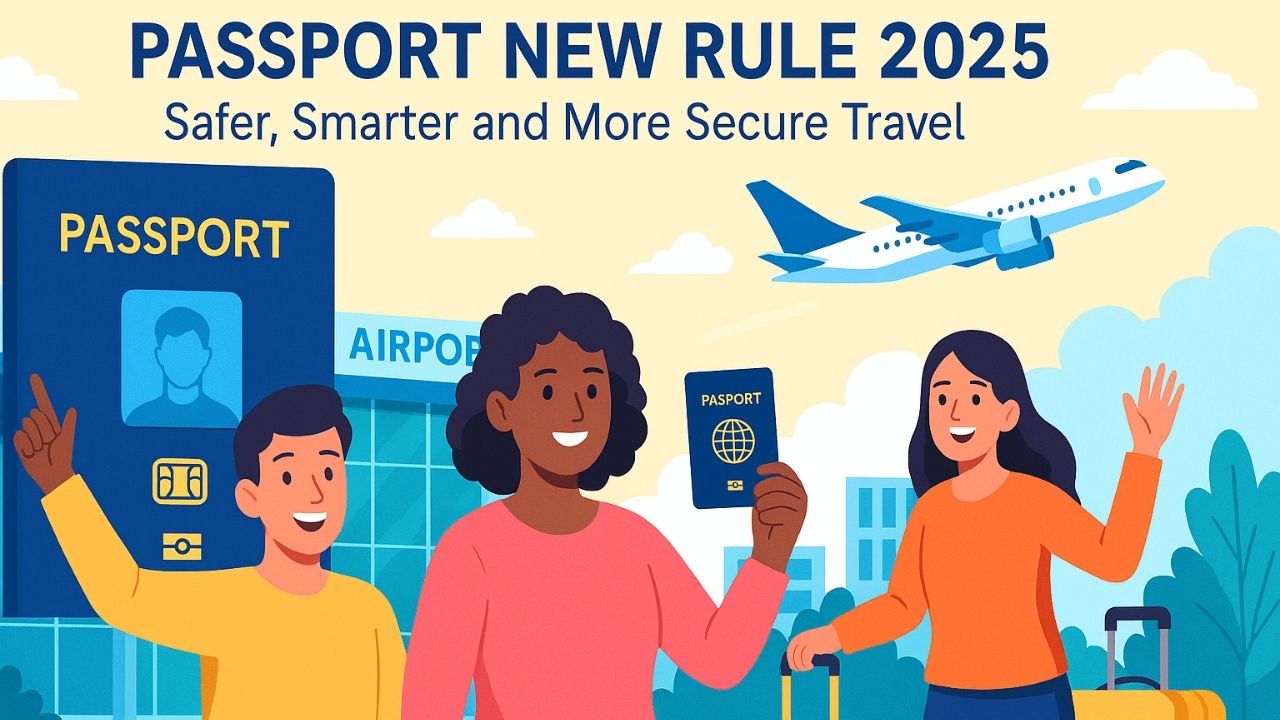As global travel continues to evolve, 2025 has introduced a transformative update to the way passports are issued, used, and secured. The Passport New Rule 2025 is a landmark initiative being adopted by several countries to improve the safety, convenience, and efficiency of international travel. With the increasing challenges of identity theft, forgery, and border control complexity, this new framework offers a timely and necessary modernisation of the passport system.
The initiative is not limited to physical passport changes. It also includes significant updates in digital infrastructure, border technology, and mobile-based services. These collective enhancements aim to provide a smoother, quicker, and more transparent travel experience for individuals while ensuring a high level of national and international security. From new biometric standards to quicker application turnarounds, the policy shift reflects the global trend toward smarter governance.
Strengthened Security Features
The new rule emphasises enhancing passport security through advanced biometric and digital measures. Governments now incorporate sophisticated biometric chips into all newly issued passports, storing facial recognition data, iris scans, and fingerprints to ensure each passport is uniquely identifiable and nearly impossible to replicate. Additionally, laser-engraved data pages replace traditional printing, offering greater resistance to tampering.
Invisible digital watermarking has been introduced on various passport pages, visible only under ultraviolet light, acting as hidden indicators of authenticity. Immigration checkpoints are being modernized to verify these marks alongside the biometric data stored in the embedded chips. AI-powered verification tools at airports enable faster, more accurate confirmation, minimizing human error and the likelihood of fraudulent entries.
Smarter Technology for Modern Travellers
Apart from security enhancements, the new rule brings a range of technological advancements to make travel smarter and more convenient. Several countries have introduced mobile applications linked to government databases, allowing passport holders to access real-time travel data, visa status, and expiration alerts. Travellers can also upload digital copies of their documents and track applications, reducing the need for frequent visits to passport offices.
One of the major highlights of this update is the availability of digital visa stamps. Instead of receiving a physical stamp on their passport, travellers now get a QR code or digital endorsement that can be scanned at immigration counters. This system not only reduces paperwork but also helps border agencies maintain better digital records of entries and exits.
Benefits of Digital Passport Features
- Faster immigration clearance through e-gates and automated counters
- Reduced paper usage and increased eco-friendliness
- Enhanced tracking of visa details and travel history
- Improved coordination between international border agencies
- User-friendly mobile access to essential passport data
Faster and Simpler Passport Services
The application and renewal process has also undergone changes to align with the digital-first approach. Earlier, individuals had to submit physical documents, make in-person appointments, and wait weeks for passport delivery. Under the 2025 rule, the entire process is now streamlined. Applicants can submit scanned documents online, complete biometric verification through self-service kiosks or mobile centres, and receive their passports within 7 to 14 working days in most cases.
Key Differences in Passport Processes
| Aspect | Before 2025 | After 2025 |
|---|---|---|
| Document Submission | Physical copies | Scanned digital uploads |
| Biometric Process | At the passport office | Self-service kiosks or a mobile app |
| Delivery Time | 15–30 working days | 7–14 working days |
| Passport Validity Extension | Not available | Optional 5-year digital extension |
| Emergency Issuance | Limited access | Biometric-based instant issuance |
Enhanced Privacy and Global Data Protection
In addition to convenience and security, there’s a growing emphasis on privacy and data protection. All biometric and identity data are stored in encrypted databases, and cross-border data-sharing protocols are being established under strict compliance standards. These changes are in line with international norms and data protection laws, ensuring that personal data is not misused or accessed without authorisation.
Governments are also taking steps to create a unified international verification system that allows immigration officers to securely access a traveller’s verified digital profile without compromising sensitive personal data. This reduces reliance on paperwork and builds trust among countries exchanging data for safe border control.
Important Guidelines for Travellers
To ensure smooth compliance with the new passport rules, travellers are encouraged to follow a few key responsibilities:
- Keep their passport information updated, especially biometric details
- Download official mobile passport apps where available
- Report lost or stolen passports immediately via digital platforms
- Check entry rules and digital visa requirements before international trips
Failure to follow these practices may lead to entry denials, delays, or additional screening at immigration.
Improved Travel Experience for Citizens
For frequent travellers, these changes offer several advantages. Immigration lines are expected to move faster due to automated e-gates, and with reduced dependency on manual checks, the overall travel experience becomes more efficient. Moreover, digital tools now assist travellers by providing real-time updates on travel advisories, document validity, and country-specific entry requirements.
